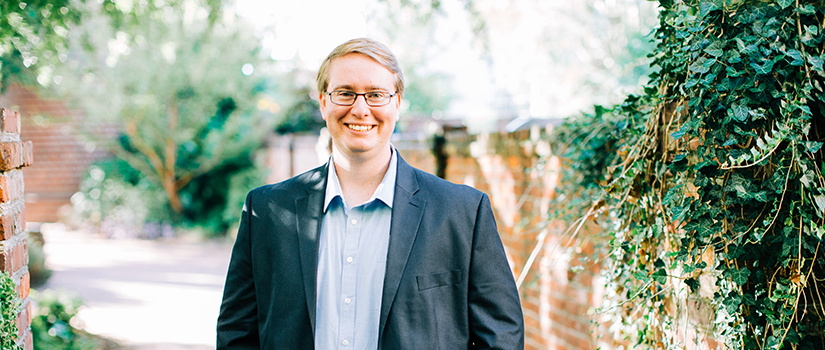How Blake MacQueen is using his research expertise to increase Native American representation in STEM fields
By Abe Danaher | September 18, 2020
When Blake MacQueen looks around, he knows he’s alone. In America, few share his family history. In the fields of science, technology, engineering and mathematics, there’s even fewer.
MacQueen is a chemical engineering doctoral student with Native American roots, in a country where only 1.2% of the population is Native American, entering a field where only 0.4% of people share his heritage. But, at the American Indian Science and Engineering Society (AISES) national conference, he will finally be surrounded by other academics with his background. And, through his 20-minute presentation at the conference sharing his pioneering research on catalytic structures, he hopes he can help change the narrative surrounding minority students in higher education both in the minds of younger Native American students in attendance and the job recruiters looking on.
“Over the years, here and at my previous university, I haven’t really met many Native Americans, so it’s kind of hard to connect to a lot of people,” he says, noting his Cherokee ancestors and their forced migration during the Trail of Tears. “And I think we are very much so underrepresented. And so, it’s really important to me to at least try and get the exposure out there to let other native or indigenous people know that there are opportunities for us and that there are others out there. Because often times, we don’t talk about it enough or there’s not enough trying to get minorities in general into the STEM field.”
His presentation will not only highlight his diverse background to future employers, fellow researchers, and potential graduate students, but also his groundbreaking research recently published in the American Chemical Society’s Journal of Physical Chemistry C.
The work, done in collaboration with faculty from the University of Puerto Rico-Mayaguez, focused on taking waste biomass from the Caribbean – such as leftover plantains – and converting it into useful chemical products. MacQueen’s research group used a method of isotope exchange with spectroscopy to determine catalytic structures that had previously only been theorized by computational methods. He was able to use experimental methods to prove that these catalytic structures are possible and also found previously unreported structures. These findings open the door for better catalysts to be made in the near future so that the productive use of wasteful biomass can become a reality.
“This is important because now knowing the structure, we can fine-tune the catalysts to make them better. It can also lead to new materials discovery, because if we know these are the good structures, we can try and find those on other materials or create them on other materials to try and make, say, cheaper, better catalysts,” MacQueen says.
His doctoral advisor, Jochen Lauterbach, says the benefits of this research will be far-reaching, especially in Puerto Rico.
“It can benefit the farmer, because the farmer gets a little bit of extra money for agricultural waste. It benefits the company that buys the biomass and processes it, because they can sell it. It creates jobs. And then ultimately, it also benefits the chemical industry because a lot of the things we are making here are coming from crude oil. And now we can switch this crude oil feedstock over to a biomass waste renewable feedstock,” says Lauterbach, a chemical engineering professor at South Carolina.
Beyond sharing the potential impact of his research, though, simply presenting at an academic conference is impactful in its own right. By sharing his research, MacQueen is showing the benefit of having diverse thinkers solving diverse problems. He hopes it inspires more minority students to be attracted to, and ultimately enter, STEM fields.
“I think it’s extremely important for students like Blake to share their experiences,” Lauterbach says. “I think it’s important that he goes to conferences like this so that he gets recognized for his background in combination with the excellent work he has done, sets an example for other Native American students, and sets a precedent for the excellent work that Native American students like him are more than capable of producing when given the chance.”
The conference, now virtual, will take place Oct. 15-17. The American Indian Science and Engineering Society is a national, nonprofit organization focused on substantially increasing the representation of American Indians, Alaska Natives, Native Hawaiians, Pacific Islanders, First Nations and other indigenous peoples of North America in science, technology, engineering and math (STEM) studies and careers.
